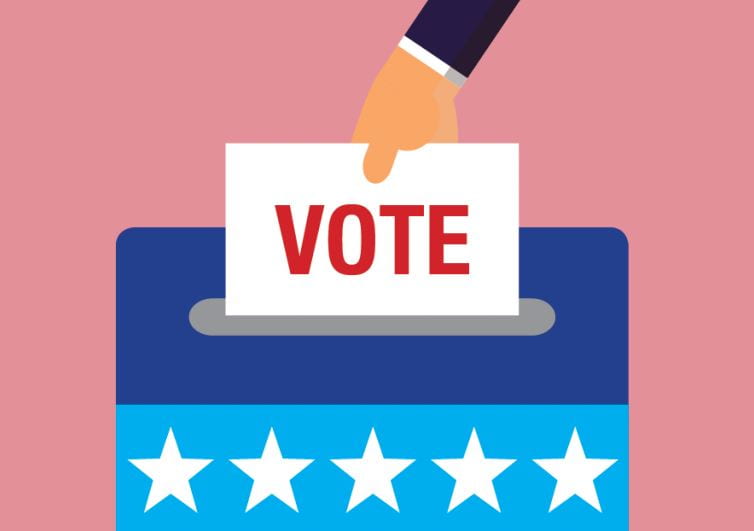In four days, thousands of Ohio State students will roll out of their beds, rub the sleep from their eyes and tune into lectures and labs from homes, their dorm rooms or their cars. Hundreds will slip on their shoes and masks and trek across campus to in-person classes. Some might have just enough time to pick up coffee from the Ohio Union.
But between a full day of classes, exams and work, will students have enough time on Election Day to cast their ballot?
From university-sponsored civic engagement initiatives like OSU Votes to emails and tweets from University President Kristina M. Johnson encouraging students to vote, Ohio State has emphasized the importance — in this election more than ever — of voting. But the emphasis is misplaced. The responsibility of voting, from submitting absentee ballot requests to going to vote early, is unduly placed on the students themselves. To be clear, students do have an individual responsibility to vote. But Ohio State, the largest university in Ohio and one of the largest in the U.S., has an even greater responsibility to fully facilitate student voting.
The easiest and most effective way for Ohio State to do that is to cancel classes Nov. 3.
Students traditionally face barriers to voting such as a lack of proper voter identification, moving away from home and a general unfamiliarity with the process of casting a ballot — contributing to 18-29 year olds having the lowest voter turnout of any age group. Eliminating class constraints on Election Day is the simplest way to reduce the impact of those barriers.
Follow the latest from The Lantern on Election Day here.
College-aged voters are not only the least likely to vote, but the most diverse group of voters; about 45 percent of eligible voters aged 18-23 are Black, Asian or other racial minorities, according to Pew Research Center. By not carving out space on Election Day for students to vote, Ohio State neglects to empower those whose voices are underrepresented in government.
The push to cancel classes on Election Day is gaining national traction, with students and faculty across the country encouraging their university administrations to sign on. There have been 29 cancellation attempts at colleges and universities this academic year compared to only nine attempts in the four academic years between 2016-20 combined, according to Day On Democracy. The concern for participation in this election is widespread.
Brown University faculty voted to declare Election Day a university holiday Sept. 8, according to a press release. Every two years, classes will be canceled on federal election days and employees will have a paid day off. Colorado College announced the cancellation of classes this Election Day Sept. 25, according to a press release.
In Ohio, students have pushed to cancel classes Nov. 3; at Oberlin College and Conservatory, the Oberlin Review published a letter Oct. 21 signed by the student senate, student council and 16 student organizations calling on the college to cancel classes. Ohio State’s Undergraduate Student Government unanimously passed a resolution Sept. 16 to make Nov. 3 John Lewis Voting Rights Day. The resolution requested the university make Election Day a paid holiday.
Ohio State canceled spring break, citing concerns over COVID-19 spread. The university’s expression of concern for civic participation this year has not been met with any clear consideration of similar measures.
When asked about whether the university considered canceling classes on Election Day, a university spokesperson said in an email Thursday that Ohio State has a “variety of programs” to facilitate student voting, including its partnership with Lyft to offer discounted rides to polling locations.
“The university will hold classes on November 3,” the spokesperson said.
Despite not canceling classes or work responsibilities for students, Ohio State is offering the opportunity for part-time and full-time faculty and staff to request time off to act as poll workers on Election Day, earning up to eight hours of their regular pay with no sacrificed vacation time, according to a Sept. 25 Human Resources press release. The request does not have to be granted and documentation of working at a poll must be provided.
It should not take a petition, a letter, a public outcry for Ohio State to recognize its role in increasing voter turnout. The university’s own core values require it. In its mission statement, the university promises it is dedicated to “preparing a diverse student body to be leaders and engaged citizens” and “fostering a culture of engagement and service.”
The university cannot do either of those things while also requiring students to attend classes Nov. 3.



